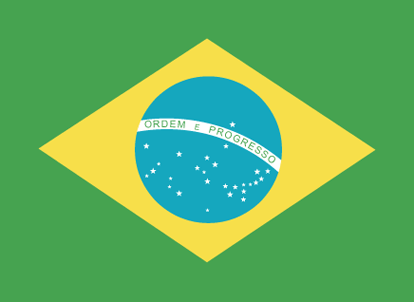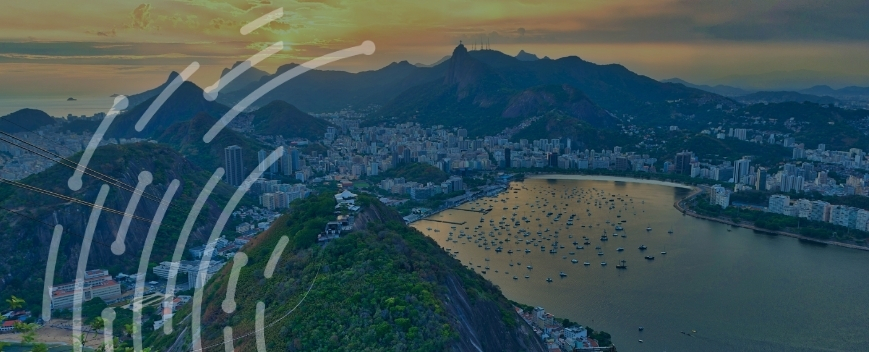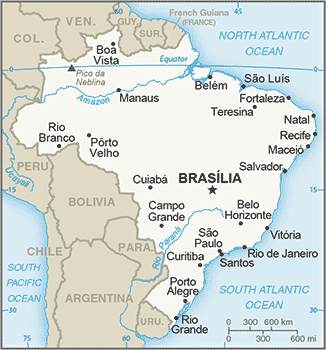Importing from Brazil


Brazil Country Profile
Official Name (Local Language) Republica Federativa do Brasil
Capital Brasilia
Population 205,823,665
Currency Brazilian Real
GDP $1,770 billion
Languages Portuguese
Phone Dial In 55
Brazil Exports Profile
Exports ($m USD) 217,739
Number of Exports Products 4,021
Number of Exports Partners 220

Brazil Economic Statistics
Government Website | https://www.brasil.gov.br/ |
| Sovereign Ratings | https://countryeconomy.com/ratings/brazil |
| Central Bank | Banco Central do Brasil |
| Currency USD Exchange Rate | 3.39 |
| Unemployment Rate | 11.8% |
| Population below poverty line | 3.7% |
| Inflation Rate | 6.7% |
| Prime Lending Rate | 13.75% |
| GDP | $1,770 billion |
| GDP Pro Capita (PPP) | $14,800 |
| Currency Name | Brazilian Real |
| Currency Code | BRL |
| World Bank Classification | Upper Middle Income |
| Competitive Industrial Performance | 81/138 |
| Corruption Perceptions Index | 96/180 |
| Ease of Doing Business | 109/190 |
| Enabling Trade Index | 110/136 |
Access trade, receivables and supply chain finance
We assist companies to access trade and receivables finance through our relationships with 270+ banks, funds and alternative finance houses.
Get StartedImporting from Brazil
Despite the recent economic downturn in Brazil, the country’s abundance of natural resources is expected to attract major investment in the next few years, especially in exploiting the country’s oil reserves. As a member of South America’s leading tariff-free trade bloc Mercosur, Brazil is also one of the emerging BRIC (Brazil, Russia, India and China) economies, predicted by Goldman Sachs to be one of the world’s most dominant by 2050.
Of the $247 billion in annual exports, the majority come from raw and agricultural materials such as iron ore ($33.4 billion), soybeans ($23 billion), crude petroleum ($13.2 billion) and raw sugar ($12 billion).
Importing from Brazil: What is trade finance?
Trade finance is a revolving facility which some banks and specialist lenders offer – it enables companies to buy products and can help ease the pressure from cashflow issues.
Typically, an alternative financier will fund up to 100% of the cost of the stock, including charges (e.g. shipping costs).
Trade finance offers added advantages over more traditional bank funding for example bridging mortgages or loans. Trade finance provides quick funding without affecting existing relationships with banks.
How does it work?
If you’re a firm importing or exporting inventory around the world, then a trade finance facility would assist your company to fund this through offering a letter of credit (LC) or some form of cash advance.
I’m looking to import from Brazil, how can Trade Finance Global help, and how does it work?
If you’re looking to import goods from other international markets, you may need import finance, which is an agreement between yourself (the importer) and the foreign exporter. An alternative financier will act as the intermediary, paying the exporter on your behalf until you get the stock and have then sold them to your customer. Repaying the lender then happens over an agreed period of time.
Chart Showing GDP Growth Compared to rest of world
GDP Composition for Brazil
Agriculture
5.2%
Coffee, soybeans, wheat, rice, corn, sugarcane, cocoa, citrus; beef
Industry
22.7%
Textiles, shoes, chemicals, cement, lumber, iron ore, tin, steel, aircraft, motor vehicles and parts, other machinery and equipment
Services
72%
Map
Top 5 Exports Partners
| Country | Trade | % Partner Share |
| China | 47,488 | 21.81 |
| United States | 27,148 | 12.47 |
| Argentina | 17,619 | 8.09 |
| Netherlands | 9,252 | 4.25 |
| Japan | 5,263 | 2.42 |
Top 5 Exports Products
| Export Product | Number |
| Soya beans | 11.8% |
| Non-agglomerated iron ores and concentrates | 8.8% |
| Petroleum oils and oils obtained from bituminou | 7.6% |
| Raw cane sugar, in solid form | 5..2% |
| Semi- or bleached non-coniferous chemical wood | 3.1% |
Speak to our trade finance team
Local Partners
- All Topics
- Brazilian Trade Resources
- Export Finance and ECA Topics
- Local Conferences



















